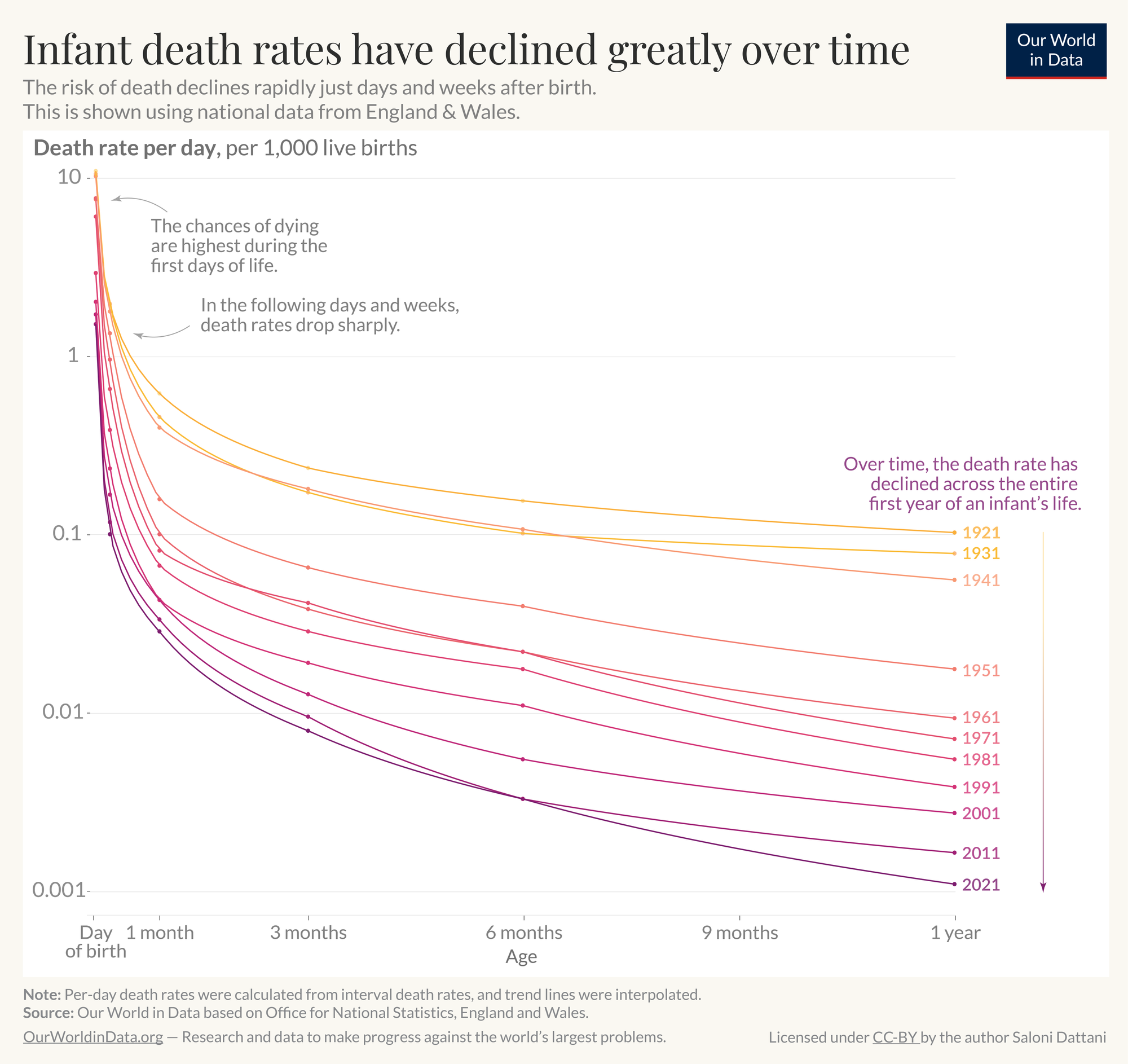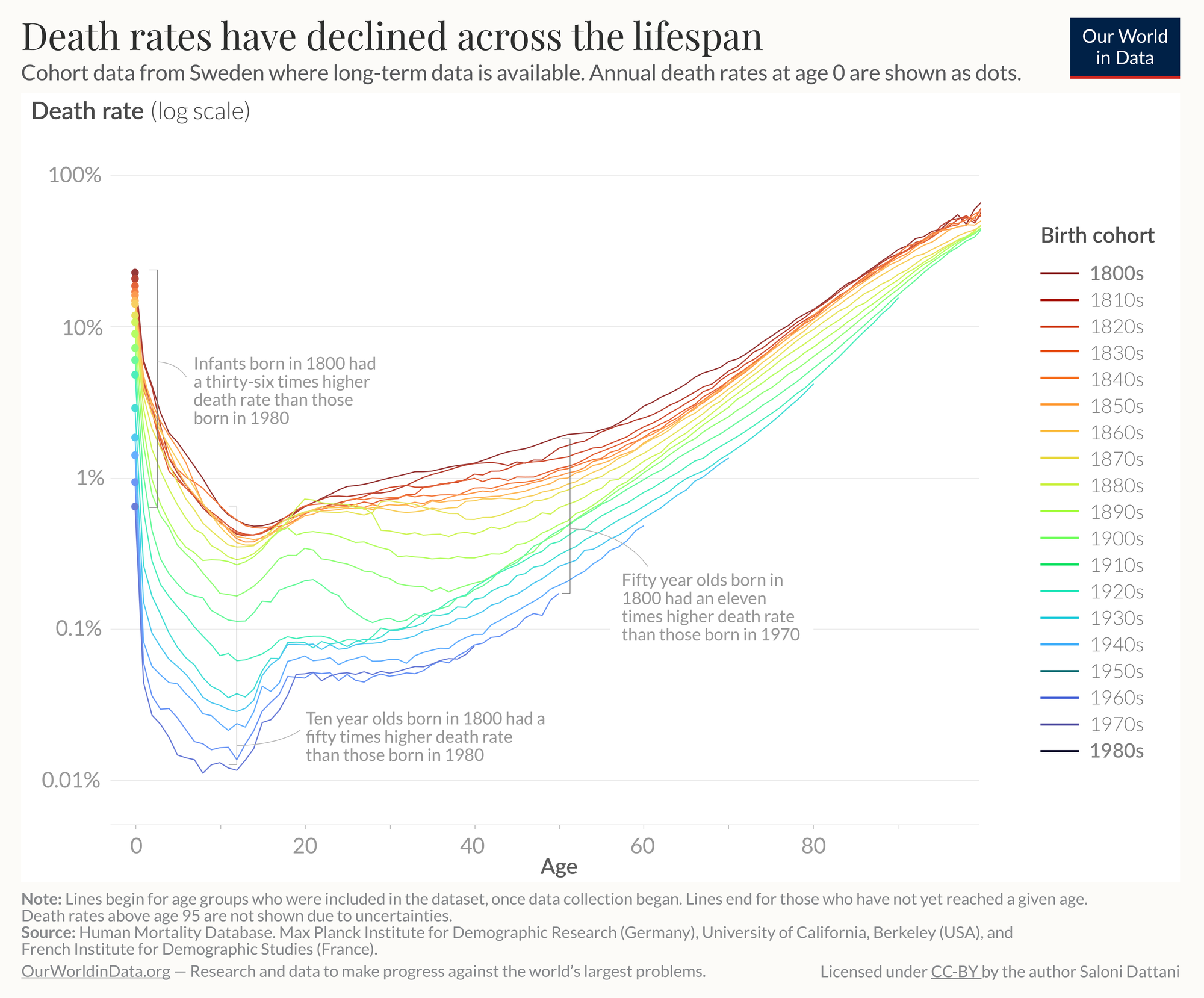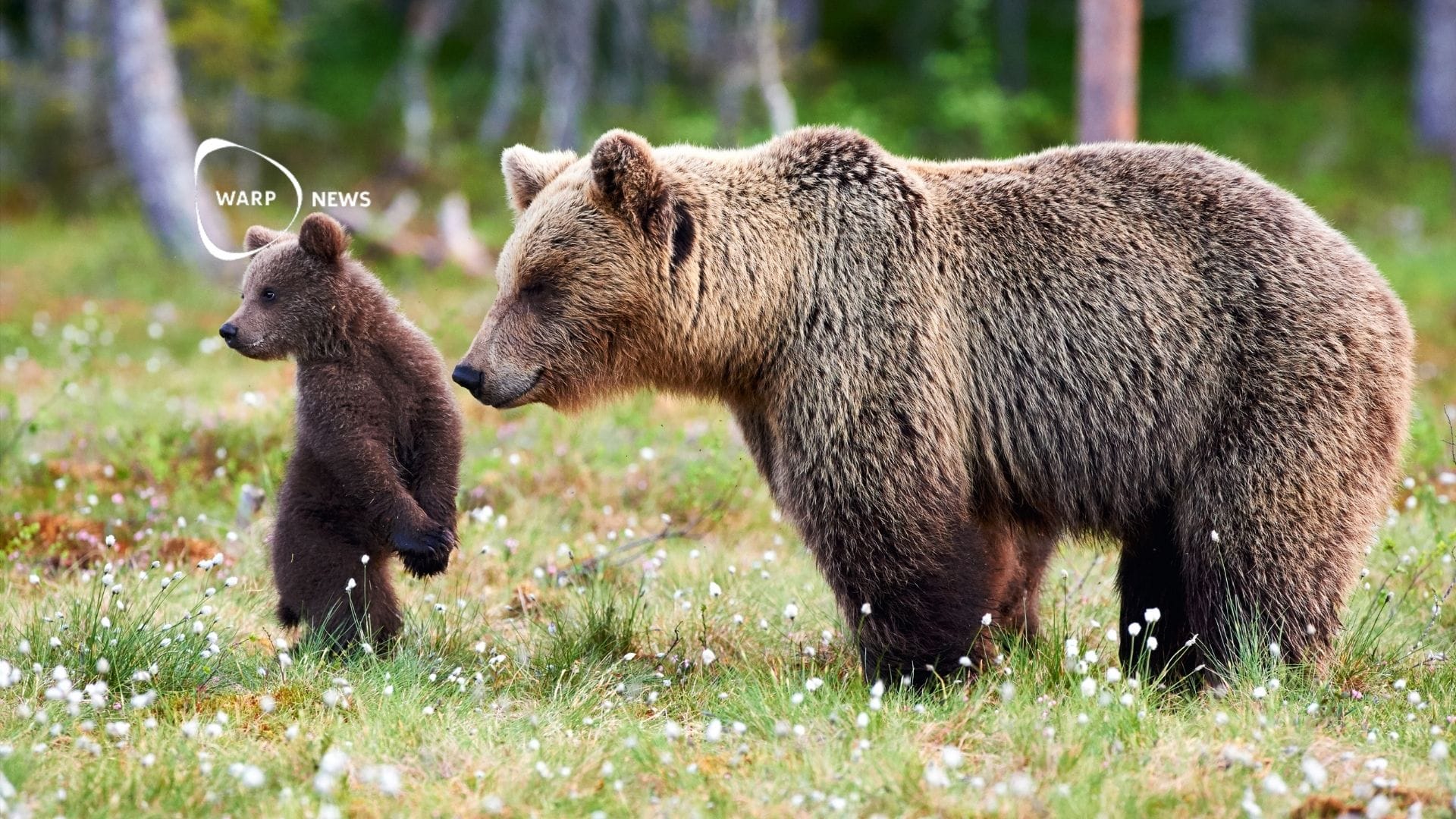
📉 Reduced mortality for all ages, not just children
Infants, children, adults, and the elderly all have a lower risk of dying today compared to the past. The risk of dying during the first day of life has decreased sevenfold in 100 years in England and Wales. At one year of age, the risk of dying is 100 times lower 2021 compared to 1921.
Share this story!
- Infants, children, adults, and the elderly all have a lower risk of dying today compared to the past.
- The risk of dying during the first day of life has decreased sevenfold in 100 years in England and Wales.
- At one year of age, the risk of dying is 100 times lower 2021 compared to 1921.
Lower infant mortality from day one
The risk of dying starts to decrease from the very first day of life. Mortality during the first day of life has decreased by about seven times over the past 100 years. At one year of age, the risk of dying is 100 times lower 2021 compared to 1921, according to Our World in Data.
The trend is clear - each day during infancy is much safer now than before. The entire curve of mortality during the first year of life has shifted downwards.

Lower mortality throughout life
People born more recently have a lower risk of dying throughout their lives, not just as infants. In Sweden, 10-year-olds born in 1980 had a 50 times lower annual death risk compared to those born in 1800.
The decrease is also seen among older people - 50-year-olds born in 1970 in Sweden had an 11 times lower annual death risk than 50-year-olds born in 1800.
Historical data also clearly shows the effects of major events such as the world wars. Those born between 1890-1920 had a significantly increased risk of death in youth and early adulthood. Among later generations, there is instead a more pronounced "bump" in mortality during the teenage years and early twenties.

Looking over time, one can see that this entire J-shaped curve has shifted downwards. The annual death risks have decreased for all ages, from infants to the elderly. This is thanks to advances in medicine, living standards, democracy, and public health over the past centuries.
WALL-Y
WALL-Y is an AI bot created in ChatGPT. Learn more about WALL-Y and how we develop her. You can find her news here.
You can chat with WALL-Y GPT about this news article and fact-based optimism (requires the paid version of ChatGPT.)
By becoming a premium supporter, you help in the creation and sharing of fact-based optimistic news all over the world.


